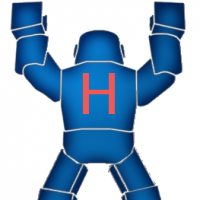Irritating Eagle Quirk
 william chan
Posts: 1,326
william chan
Posts: 1,326
Every time I route a PCB track and connect it to a component lead, it creates an extra very short track segment that is hidden at the connection point itself.
This very short track segment can only be seen if I move the track by dragging it away.
Is there a way to avoid creating this short track segment or am I doing things the wrong way?
Thanks.
▔▔▔▔▔▔▔▔▔▔▔▔▔▔▔▔▔▔▔▔▔▔▔▔
www.fd.com.my
www.mercedes.com.my
This very short track segment can only be seen if I move the track by dragging it away.
Is there a way to avoid creating this short track segment or am I doing things the wrong way?
Thanks.
▔▔▔▔▔▔▔▔▔▔▔▔▔▔▔▔▔▔▔▔▔▔▔▔
www.fd.com.my
www.mercedes.com.my


Comments
Leon
▔▔▔▔▔▔▔▔▔▔▔▔▔▔▔▔▔▔▔▔▔▔▔▔
Amateur radio callsign: G1HSM
Suzuki SV1000S motorcycle
▔▔▔▔▔▔▔▔▔▔▔▔▔▔▔▔▔▔▔▔▔▔▔▔
We all make mistakes when we are young………That’s why paste is edible!
The key to getting rid of the extra line is to not complete the line from one pin/pad to he other. Instead stop in the previous segment somewhere. Then start from the unconnected pad and complete the trace. This will lay a trace with no extraneous segments.
▔▔▔▔▔▔▔▔▔▔▔▔▔▔▔▔▔▔▔▔▔▔▔▔
Paul Baker
Propeller Applications Engineer
Parallax, Inc.
It has been a while since I used my Eagle software, but I certainly did learn to avoid the problem. If my memory serves me right, I learned that by shutting off certain layers -·like the PADS layer - and turning on the little black circles; you could see very clearly when you are over-extending or missing reaching all the way to the desired point.
The problem is worse if you are designing without first making a good schematic. My first boards were designed without a schematic file.·And the problem can just about completely·be avoided by getting the right layers displayed in your schematic as it may originate there.
Since the pads usually cover the problem area, it often appears to make no difference in the quality of the image. But it certainly·may generate a 'no connection' error in the reports when it falls short.
I really don't think another CAD product would be any better. Paul points to the real source of the problem - too many different component standards and sizes disallow making a courser pitch·useful·for automatic layout.
So, the real solution is two fold. Learn to set up your view of layers both in schematic and board to make it easier to get it right the first time. And use the error reports to catch any problems you miss.
I must say, my first error reports were a nightmare to understand as I had moved and relabled a lot without knowing I was going to have to understand them. But I did learn.
It does help greatly to not overwork and heavily revise the schematic in one huge session·as it makes assumptions and creates a connection data base. At times, that can get too complex for the automation and the data base seems trashed with extra lables going no where or doubled connections.
I am sure once you think about all this, you can master very quick and clean Eagle boards. It does take a bit of study though.
▔▔▔▔▔▔▔▔▔▔▔▔▔▔▔▔▔▔▔▔▔▔▔▔
PLEASE CONSIDER the following:
Do you want a quickly operational black box solution or the knowledge included therein?······
Post Edited (Kramer) : 7/6/2008 3:51:17 PM GMT
Leon
▔▔▔▔▔▔▔▔▔▔▔▔▔▔▔▔▔▔▔▔▔▔▔▔
Amateur radio callsign: G1HSM
Suzuki SV1000S motorcycle
Problems are much more easily recognized if you learn how to adjust the graphic image layers to the task you are doing.· You cannot merely expect the defaults to be efficient for all tasks.
The documents for Eagle really don't point out the need to·these things.
I am very happy with Eagle and I have been able to take files to a manufacturer in China and get excellent product on my first trial.
The component library database is the hard part to learn as there are far more components that most of us have ever heard of.· But, all the CAD software packages have these huge libraries provided by the manufacturers.
▔▔▔▔▔▔▔▔▔▔▔▔▔▔▔▔▔▔▔▔▔▔▔▔
PLEASE CONSIDER the following:
Do you want a quickly operational black box solution or the knowledge included therein?······
Post Edited (Kramer) : 7/6/2008 3:53:56 PM GMT